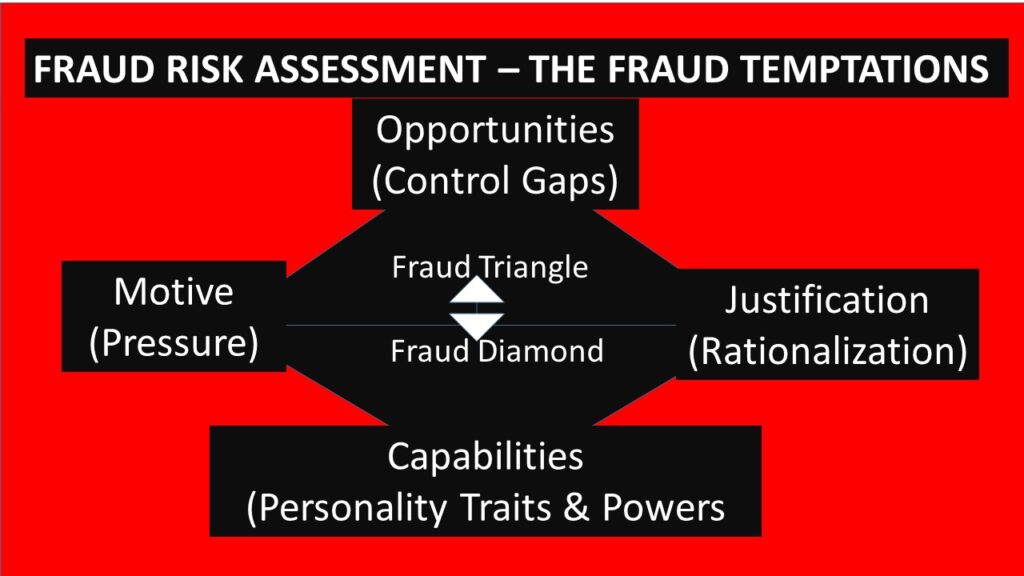How the global community has responded to the fraud risk exposures and the devastating impacts.
Legislations and regulatory standards are considered as the most effective mechanisms for combating frauds and abuses because they reinforce commitment to compliance to ethics and good business conduct. Many jurisdictions have recognized the above and have responded by establishing multiple levels of legal and regulatory frameworks and standards to demonstrate their commitment to maintain ethics and good corporate governance principles and fight against frauds and abuses.
At the international level, the United Nations (UN) and many other international self-regulatory agencies have also responded by establishing global and regional anti-fraud and abuse conventions and standards to help in the fight against frauds and abuse. For example, the United Nations (UN) Convention against Corruption and Economic Crime is focused on combating bribery and corruption in the government institutions by
- prohibiting all categories of companies and individuals from making payments to foreign government officials to assist in obtaining or retaining businesses,
- encouraging good corporate governance practices at all levels,
- embedding effective internal controls, ethics and compliance systems including establishing robust business processes, policies, procedures, and
- adhering to good accounting practices, keeping accurate accounting records, preparing and presenting accurate accounting reports that fairly reflect the transactions of the corporations.
Other regional and industry-based conventions and standards against Fraud and Abuse are
- Institute of Internal Auditors (IIA),
- Committee of Sponsoring Organizations of the Treadway Commission (COSO),
- OECD Anti-Bribery Convention,
- USA Foreign Corrupt Practices Act (FCPA),
- Council of Europe (COE) Criminal Law Convention on Corruption,
- Organization of American States (OAS) Inter-American Convention Against Corruption,
- The World Bank anti-corruption convention for banks,
- Transparency International,
- INTERPOL,
- Financial Action Task Force (FATF), and
- The International Accounting and Auditing Standards.
Through the United Nations convention against bribery and corruption and other regional conventions and industry based standards, the membership countries and organisations are able to achieve the following:
- advance awareness of the devastating impacts of fraud and abuse,
- influence positive behavioral changes at all levels,
- minimize occurrence and impacts of fraud and abuse,
- enhance economic stability in the capital markets and businesses,
- promote global peace and economic stability amongst nations. and
- protect and improve international trade amongst countries, foreign direct investments and small-scale businesses flourishing.
It is important to note that the UN convention provides criminal justice system for those accused of committing economic crime and corruption by requiring that the fundamental human rights of the accused should be recognized and respected. The specific considerations the UN convention provided for the criminal justice system are the following:
- The accused has the right not to be subject to arbitrary arrest, detention or exile.
- The accused has right to be informed of the criminal charges.
- The accused has right for fair hearing.
- The accused is presumed innocent until proven guilty according to law right to appeal a criminal conviction and sentence.
- The accused has right for privacy and protection from privacy violations.
Each member country is required to demonstrate commitment to the signed conventions through the enactment and enforcement of domestic laws and regulations. For example, the USA’s FCPA of 1997 and SOX Acts of 2002 are some of the mechanisms through which the USA congress has demonstrated its commitment to the UN convention and other standards. The FCPA is focused on combating bribery and corruption with USA government officials while SOX ACT is focused on Accounting records and combating Financial Statement Reporting Fraud and Abuse for the companies with operations in USA.



The blog touched relevant knowledge elements but it is too long. Concise blogs pass messages quicker.
Dear Edu
Thanks for the comment. Your recommendations noted.